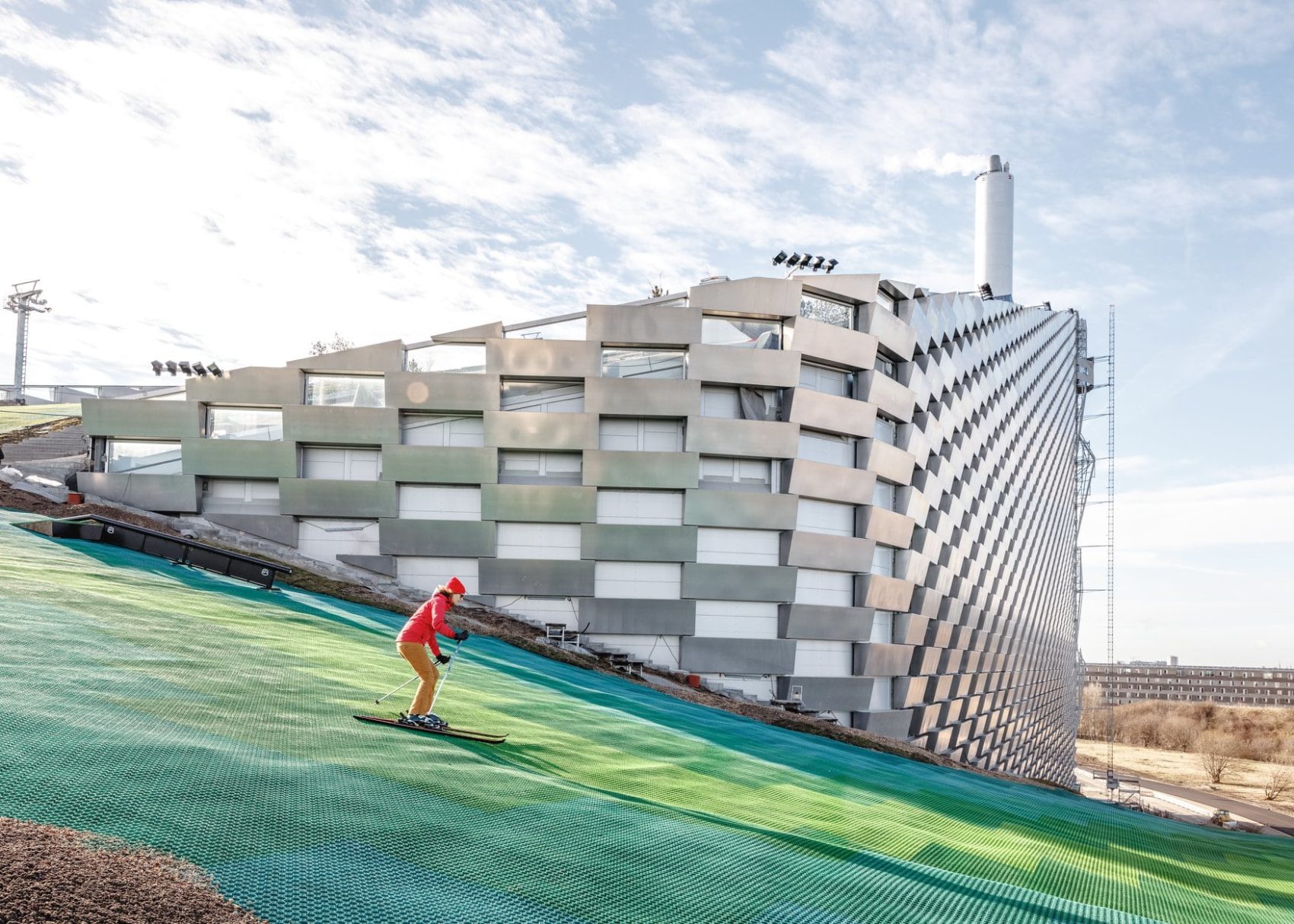When you need to locate a new power plant close to downtown in order to meet climate change goals, how do you get people to accept its location? You could try putting a ski slope on its roof.

The soon to be completed Amager Bakke power plant in Copenhagen, Denmark is a key component to the City’s plans to become the world’s first zero-carbon city by 2025. In order to achieve full utilization of the power plant it must be located in town. Yet, this proximity to a population center would easily be controversial. To prevent any ruffled feathers it was determined that Amager Bakke would need to fulfill another function for the people of Copenhagen. The solution was recreation in the form of an artificial ski slope, CopenHill.

Amager Bakke is a waste-to-energy power plant. Waste-to-energy (WTE) power plants have been popular in Europe for a long time. Large populations in geographically constrained areas often lack for space with which to landfill their waste. WTE provides a source of energy while also largely eliminating the need to landfill waste. Yet, waste-to-energy has been controversial. The first generation of plants built had poor emission control for nitrogen oxides (NOx) and sulfur dioxide (SO2), key components to the creation of acid rain. Additionally, combustion did not occur at high enough temperatures to prevent the formation of dioxins, some of the most toxic substances know to man. Emission control technologies have improved significantly since the first generation plants, and new furnaces operate at really high temperatures (over 1000 degrees Celsius, 1832 degrees Fahrenheit) preventing the formation of dioxins. But, old fears die hard as evidenced by the cancelation of a proposed WTE plant in Australia over concerns about emissions.

Not only does Amager Bakke produce electricity, it is also a combined heat and power (CHP) plant. In addition to producing electricity, waste heat from the power generating process is used to heat water. This warm water is then pumped to houses across the city and used for radiant heating. 98% of homes in Copenhagen’s district heating system receive heat via the radiant heating provided by the waste heat. Utilization of the waste heat is a vital part in Copenhagen’s plans to become the first carbon neutral city by 2030. Yet, waste heat can only be employed within short distances from the power plant itself. Hence, Amager Bakke’s presence close to the city center.

The architectural firm that designed Amager Bakke, Bjarke Ingels Group (BIG), has already won several awards for the design of the plant. Amager Bakke’s outer façade is composed of hundreds of aluminum planter boxes, which come spring and summer will be full of flowering and growing plants, literally turning the power the plant green. Additionally, the exterior was designed to allow large amounts of natural light into the building. Reducing the need for electricity to light and warm the building.

The slopes of CopenHill includes green, blue, red, and black pitches. In Europe a red slope is an advanced intermediate run between a blue and a black run. In North America the most similar example would be the blue-black slopes at Winter Park, Colorado. Three magic carpets, and a T-bar provide access to the top of the hill. The slopes themselves are covered in synthetic bristles that allow skiing year round. So called dry ski slopes have been around for decades, and have been made from a variety of synthetic bristly materials. Dry ski slopes have been popular in parts of Europe with little to no snowfall. CopenHill will offer a vertical drop of some 75 meters (246 feet), giving CopenHill the distinction of having the highest vertical drop of any ski hill in Denmark. And if skiing just isn’t your thing, the exterior of Amager Bakker will also feature a climbing wall that will be some 85 meters (279 feet) tall.
Part of CopenHill was opened to the public for a preliminary trial back in February. The entire hill is scheduled to be completed and open in early May.